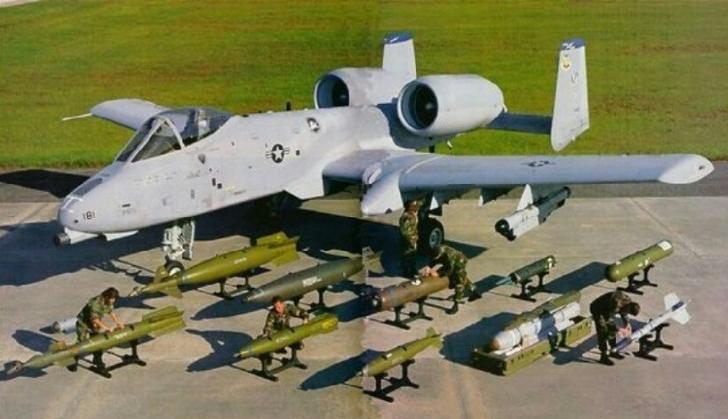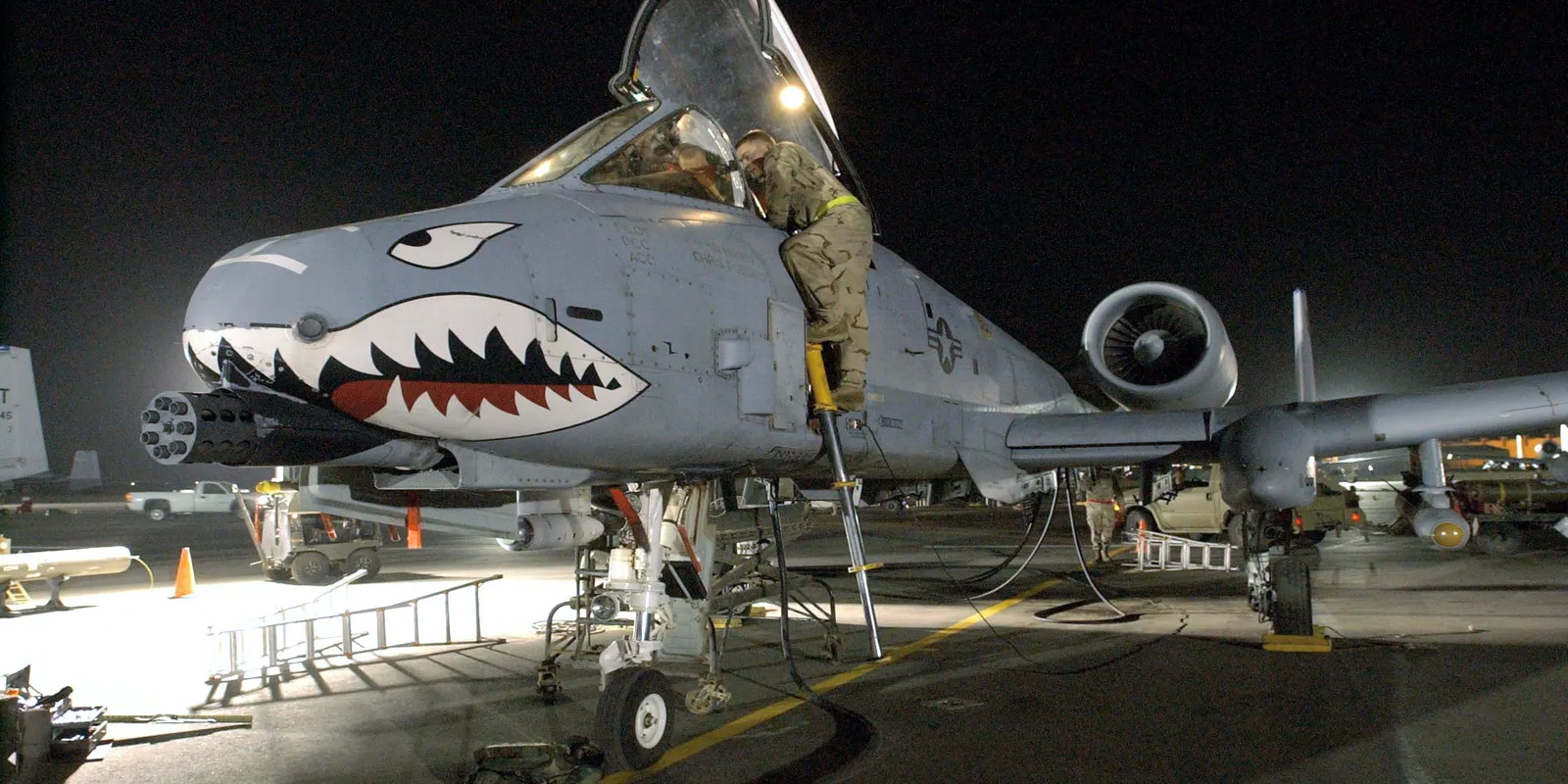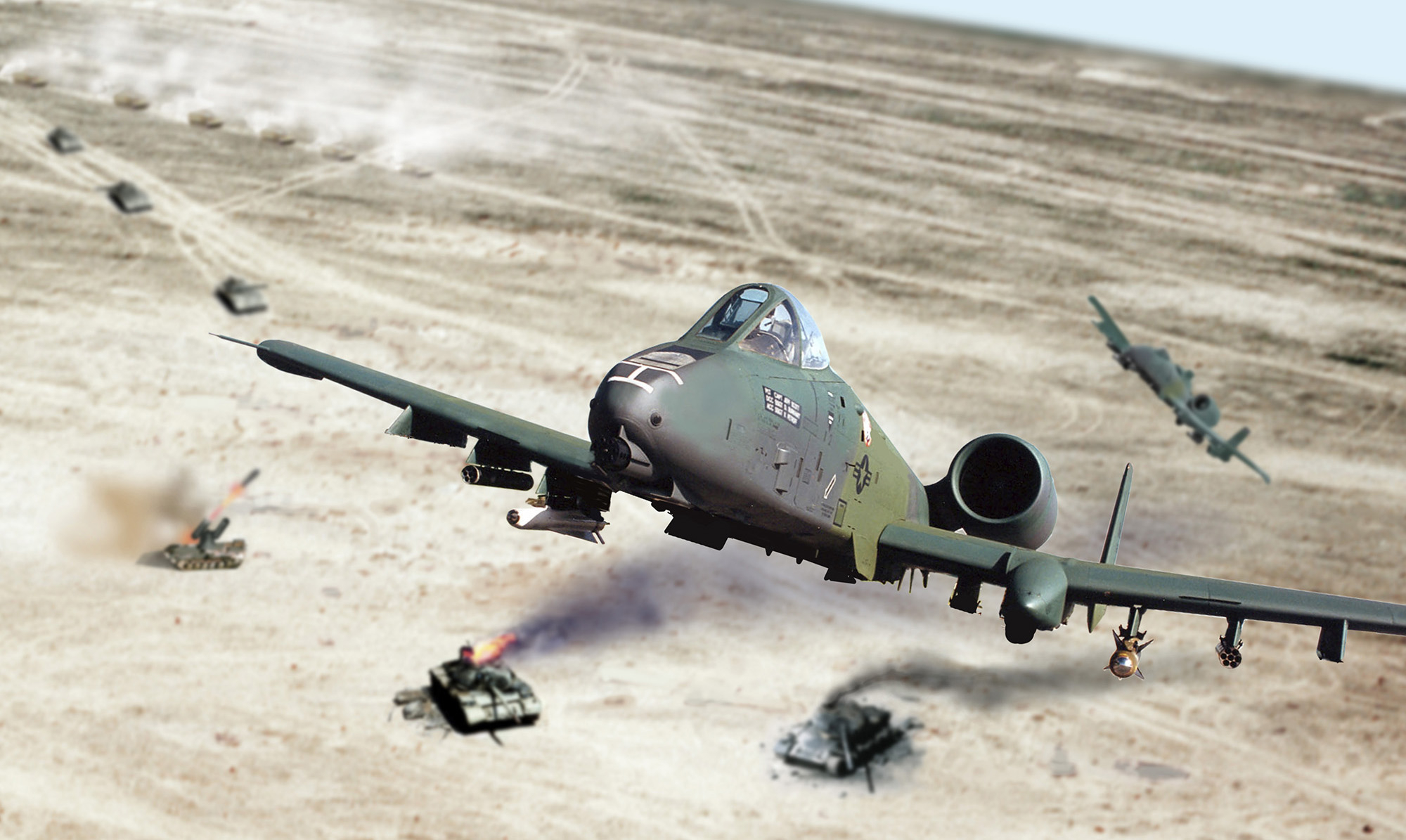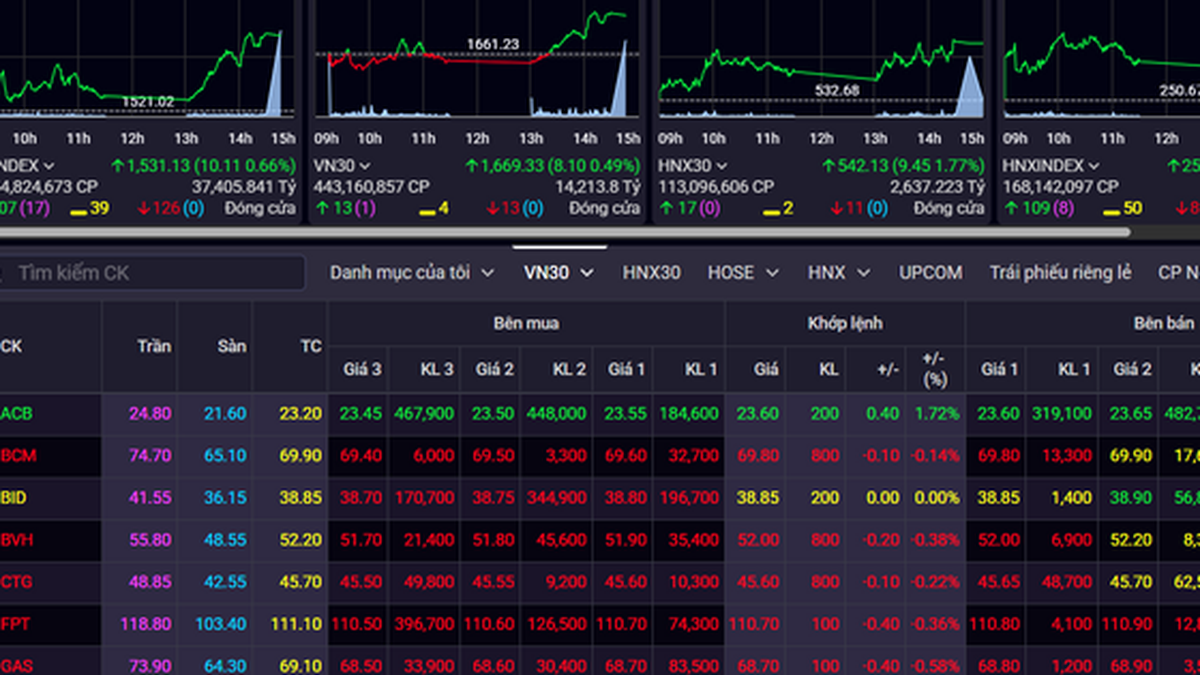Plan to replace A-10 with F-35
For years, Air Force officials have pointed out that the A-10 “Thunderbolt” is past its prime and will be vulnerable in future wars due to its slow speed. The production line for the “Thunderbolt” aircraft even ceased in the mid-1980s, and most of the Air Force’s A-10s are four decades old.

An A-10 Thunderbolt II with the full range of weapons it can carry. Photo: Crew Daily
The Air Force believes the A-10’s job can be done by newer, more advanced aircraft. “While the A-10 has served us well, it is not part of the future battlefield,” said Lt. Gen. Richard Moore, Air Force Deputy Chief of Staff for Plans and Programs.
According to the Wall Street Journal, the Pentagon said it wants to devote resources from the A-10 to other aircraft, most notably the F-35. The fifth-generation multirole fighter jet manufactured by Lockheed Martin uses stealth technology and can fly nearly three times faster than the A-10.
The F-35 can provide air support for ground forces, a task that the A-10 was designed to do, while still being agile and flexible enough to deal with new generation enemy fighters and attack aircraft. Not to mention, the F-35's advanced electronic systems allow it to perform well in both reconnaissance and electronic warfare.
US Air Force strategists believe that the A-10 is extremely vulnerable to modern air defense systems, because its maximum speed of just under 700 km/h is too slow for it to escape current Mach 2 and Mach 3 air defense missiles. According to them, a war in the Indo- Pacific region, if it happens, is unlikely to involve a massive presence of US ground forces, so there is no need for the protection of the "thunder god" A-10.
The reason why the "god of thunder" is late in retiring
But Congress has other ideas. Lawmakers are refusing to let the military retire the A-10s. They believe the aircraft is worth using because of its combat endurance and cost-effectiveness. It has cost the US just over $4 billion to operate its entire A-10 fleet over the past decade.
On average, each A-10 costs only $22,531 per combat flight hour. Meanwhile, the F-35 will cost about $42,000 per flight hour. The difference is almost double while the reality on the battlefield shows that the "thunder god" A-10 is still extremely formidable in ground attack support and anti-tank missions.

Close-up of the powerful 7-barrel GAU-8/A Gatling gun of the A-10. Photo: USA Today
Defenders of the “thunderbird” in the US Congress cite the A-10’s extraordinary combat record in Afghanistan and Iraq, where it destroyed many enemy tanks and helicopters. Some argue that the Air Force has not shown that the F-35 is as good at supporting ground attacks as the A-10.
“The A-10 is the most capable aircraft in providing close air support and protecting our troops on the ground,” Arizona Sen. Mark Kelly, a former Navy pilot, told the Wall Street Journal. “I look forward to seeing how our military will maintain those capabilities in the future.”
Indeed, the nature of the wars in Iraq and Afghanistan has suited the A-10 well. There, the US military’s dominance of the skies has allowed the A-10 to hover over the battlefield with impunity. “It’s built for a very specific mission, which is to destroy everything it sees on the ground,” said Andrew Wood, a retired A-10 pilot who saw much of the Thunderbird’s action in Afghanistan. “And it does it very, very well.”
According to records, during the 1991 Gulf War, the US Air Force deployed 132 A-10s. This powerful “thunder god” squadron had a mission completion rate of 95.7%, carried out 8,100 sorties and launched 90% of the AGM-65 Maverick missiles it carried. The US side said that the A-10 Thunderbolt II aircraft destroyed 987 tanks, 926 artillery pieces and 1,355 combat vehicles of various types of the Iraqi army.
So, although the US Air Force has repeatedly asked Congress for permission to retire the A-10 over the past decade, it has been denied each time until the 2023 fiscal budget is passed. Last March, US Air Force Chief of Staff General Charles Q. Brown Jr. confirmed that the first 21 A-10 Thunderbolt IIs will be retired this year and the aircraft will be completely retired by 2029.
What makes the "thunder god" powerful?
The A-10 Thunderbolt II was developed by Fairchild Republic for the US Air Force in the 1970s and officially entered service in 1976. It was named after the Republic P-47 Thunderbolt, a World War II fighter-bomber that was very effective in attacking ground targets. In addition, it was also called the "Warthog" (wild boar) because of its strange, clumsy appearance.

A-10s shot down many Iraqi tanks during the Gulf War. Photo: Air Force Magazine
The aircraft has two powerful General Electric TF34-GE-100 turbofan engines mounted in the tail with large, straight wings, allowing the A-10 Thunderbolt II to fly flexibly at low altitudes (from 300 to 2,500 meters), long flight time and a wide combat radius. This is the only aircraft in the US Air Force's inventory designed specifically for ground attack and close air support missions.
The A-10 has a night vision imaging system (NVIS), a helmet-mounted display, and a large bubble-shaped cockpit that gives the pilot a panoramic view of his surroundings. The cockpit and control systems are protected by thick titanium armor weighing up to 540 kg, allowing the A-10 to continue flying even when hit by armor-piercing and high-explosive rounds up to 23 mm.
The ability to take off and land from relatively short runways allows the A-10 to operate well from areas close to the front lines. The aircraft can be maintained and operated at bases with limited facilities, and many of the A-10's left and right parts are interchangeable, including the engines, main landing gear, and vertical stabilizer.
In terms of firepower, the A-10's 30mm GAU-8/A Gatling gun can fire 3,900 rounds per minute. The aircraft is equipped with a range of air-to-ground weapons, including laser and GPS-guided munitions, AGM-65 Maverick missiles and AIM-9 Sidewinder missiles. Thanks to the immense firepower it carries, the A-10 becomes a nightmare for enemy ground forces.
According to the 2022 yearbook of the American Aviation and Space Magazine, the US military has 281 A-10s, with 141 in active duty in air force units, 55 in the air force reserve, and 85 in the air defense force.
A-10 Thunderbolt II aircraft specifications
Crew: 1 person
Length: 16.16 meters
Height: 4.42 meters
Wingspan: 17.42 meters
Engine: 2 General Electric TF34 -GE-100A jet engines, thrust 40.32 kN/unit
Top speed: 675 km/h
Flight ceiling: 13,636 meters
Maximum takeoff weight: 22,950 kg
Range: 1,300 km
Combat Radius: 400 km
Weapons:
+ A 30 mm GAU-8/A 7-barrel Gatling gun with a rate of 3,900 rounds/minute and 1,174 rounds of ammunition.
+ Can carry 7,200 kg of weapons on 8 underwing hardpoints and 3 underbody hardpoints, including 500-pound (225 kg) and 2,000-pound (900 kg) Mk-82 bombs, Mk-77 incendiary bombs, BLU-1 and BLU-27/B cluster bombs, AGM-65 Maverick air-to-ground missiles, laser/GPS guided bombs, 70 mm Hydra unguided rockets; infrared countermeasures flares and AIM-9 Sidewinder air-to-air missiles.
Nguyen Khanh
Source




































































![[Photo] National Assembly Chairman Tran Thanh Man receives Chairman of Morocco-Vietnam Friendship Association](https://vphoto.vietnam.vn/thumb/402x226/vietnam/resource/IMAGE/2025/7/26/b5fb486562044db9a5e95efb6dc6a263)

































Comment (0)